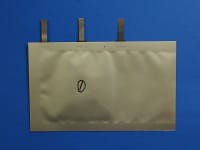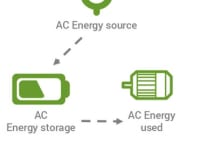

The battery is a crucial element of our daily lives. As devices become more mobile and interconnected, demands for higher battery capacity, longer duration, and better safety grow much faster than the commercial offer introduced to the market today. Additionally, the regular Lithium-ion batteries in the market use a Direct Current (DC) system and therefore electricity needs to be converted from Alternating Current (AC), which is directly from the power grid to DC in order to be stored in the form of batteries, resulting in power losses. It is for this reason that we have developed a solution to this problem - a battery that integrates a new type of electrode, the Biode, to enable an AC system for power storage to deliver batteries that have more capacity, last longer and are safer. The Biode we introduce has both the characteristics of an Anode and a Cathode and allows our AC battery to be approximately 30% more compact and safer than regular DC batteries.
Our world’s first-ever standalone AC battery solution will be licensed to battery manufacturers/parts manufacturers worldwide. The production of our AC battery will utilize existing materials and production lines. Therefore, we can penetrate the market faster than competitors that use new industry materials or offer all-solid-state batteries.
The mobility battery market is estimated to be 21 billion USD by 2026 with a CAGR of 4.2%. Our business model is B2B, we have been raising awareness by participating in several start-up competitions and conferences in Europe, Japan, China, and the USA. We received 70% strong interests out of 60+ stakeholders we visited in Europe/Japan
We have 35 years of work experience not only in the battery/circuit industry but also in researching about particle accelerators in Tsukuba, Japan. This inter-disciplinary know-how and experiences are one of the key differentiation. We already have a prototype of our AC Biode battery at 20W. Once we raise seed funding of 600K USD, within a year, we will scale it up to 50kW with Cockcroft-Walton Multiplier optimized for mobility applications.
Video
-
Awards
-
 2019 Automotive/Transportation Category Winner
2019 Automotive/Transportation Category Winner -
 2019 Top 100 Entries
2019 Top 100 Entries
Like this entry?
-
About the Entrant
- Name:Tadashi Kubo
- Type of entry:teamTeam members:Farazane Taraie (Ms.)
- Patent status:pending








